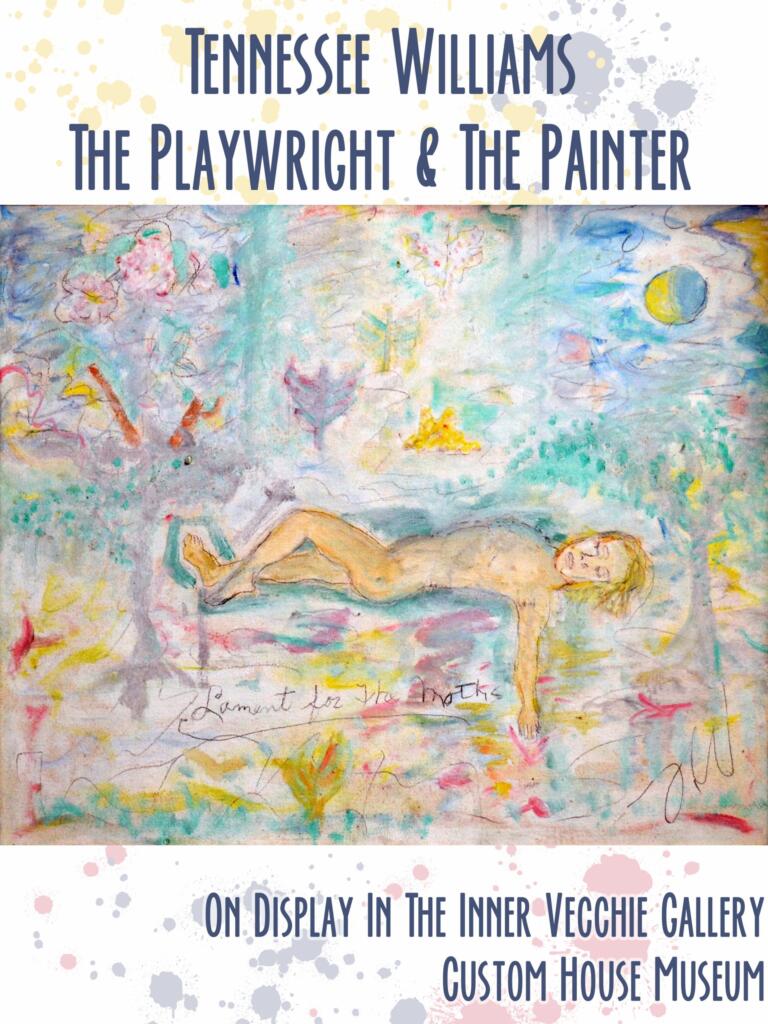Tennessee Williams
The Playwright and the Painter
The gallery contains 15 of the writer’s paintings dating from the 1970s. The paintings were donated to the Key West Art & Historical Society from David Wolkowsky, one of Williams’ closest friends who hosted him at his private island on Ballast Key on multiple occasions, and at his Pier House Resort. Williams’ subject matter for his artwork range from close friends, such as Michael York and David Wolkowsky, to personifications from Williams’ own poetry and short stories.
Williams was one of the most admired playwrights of the 20th century. While he wrote fiction and motion picture screenplays, Williams is most widely known for his plays, which are chiefly set in the South. Several of his plays including, A Streetcar Named Desire, The Glass Menagerie, and Cat on a Hot Tin Roof are considered among the finest of the American stage. For more than 30 years, Williams lived and wrote in a cottage on a quiet Key West street. As a form of relaxation, he took up oil painting on his patio, often sketching friends, acquaintances, and characters from his plays.
Williams first took up painting in the early 1960s when his career as a playwright ebbed. He often relaxed on the patio of his Key West home and painted. Williams’ patio was his preferred art studio. People frequently visited his house on Duncan Street and purchased his artwork before the paint was dry.
While he enjoyed working on the patio, he did enjoy escaping the clamor of Key West by going to Ballast Key, a private island 9 miles off Key West. The island’s owner, David Wolkowsky, recalls that Williams would bring a bottle of red wine and his oil paints when he visited. Billie Holiday songs played in the background while Williams captured different images on canvas.
The subject matter for Williams’ paintings was somewhat diverse. He portrayed several notable characters from his plays, while also depicting close friends and acquaintances. Other works feature homosexual themes. Williams, an openly gay man, struggled with his sexuality from a young age. The taboo surrounding homosexuality during his lifetime manifested itself in a number of Williams’ paintings.
Painting was a passion for him, almost to the point that it became a second profession. Toward the end of his life, Williams gradually gave up writing for painting; a less harsh way to express himself. Critics did not think as much of his painting as his plays, however his artwork remains widely popular among collectors.
The Exhibition is made possible through the generosity of David Wolkowsky

